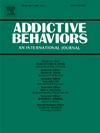Evidence update on e-cigarette dependence: A systematic review and meta-analysis
IF 3.7
2区 医学
Q1 PSYCHOLOGY, CLINICAL
引用次数: 0
Abstract
Introduction
We conducted this review to examine the risk of e-cigarette dependence in different populations by updating the review on this topic by the National Academies of Science, Engineering, and Medicine.
Methods
Six academic databases were searched for studies published between September 2017 and December 2023. We included peer-reviewed human, animal, cell/in vitro original studies examining associations of e-cigarette use and dependence but excluded qualitative studies. Three types of e-cigarette exposure were examined: acute, short-to-medium term, and long-term. Meta-analysis were conducted when possible. Different risk of bias tools were used for assessing quality of the included human studies.
Results
We included 107 studies, of which 34 studies were included in the subgroup analysis. Meta-analyses showed that non-smoker current vapers had no statistically significant difference in level or prevalence of dependence compared to non-vaper current smokers and dual users. However, never smoker current vapers had a lower level of dependence (SMD −0.723, p < 0.01) compared to dual users, which was also supported by ANOVA test. Narrative review findings suggest that nicotine vapers had higher level of dependence than non-nicotine vapers and e-cigarette dependence is positively associated with nicotine concentration, frequency, and duration of use. No strong relationship was found between dependence and product types or features. Socio-demographic factor-based subgroup findings were inconclusive.
Conclusions
The level and prevalence of e-cigarette dependence is similar to cigarette dependence. There was high variability in the definitions and methods used for defining populations and assessing dependence. Further research and monitoring are crucial.
电子烟依赖的最新证据:系统回顾和荟萃分析。
引言:我们通过更新美国国家科学院、工程院和医学院关于这一主题的综述,进行了本综述,以检查不同人群对电子烟依赖的风险。方法:检索6个学术数据库,检索2017年9月至2023年12月发表的研究。我们纳入了同行评议的人类、动物、细胞/体外原始研究,研究了电子烟使用和依赖之间的关系,但排除了定性研究。研究人员检查了三种类型的电子烟暴露:急性、中短期和长期。尽可能进行meta分析。使用不同的偏倚风险工具来评估纳入的人类研究的质量。结果:我们纳入107项研究,其中34项研究纳入亚组分析。荟萃分析显示,目前不吸烟的电子烟使用者与目前不吸烟的电子烟使用者和双重使用者相比,在依赖程度或流行程度上没有统计学上的显著差异。然而,从不吸烟的吸烟者的依赖水平较低(SMD -0.723, p)。结论:电子烟依赖的水平和流行程度与香烟依赖相似。在定义种群和评估依赖性所使用的定义和方法方面存在很大的可变性。进一步的研究和监测至关重要。
本文章由计算机程序翻译,如有差异,请以英文原文为准。
求助全文
约1分钟内获得全文
求助全文
来源期刊

Addictive behaviors
医学-药物滥用
CiteScore
8.40
自引率
4.50%
发文量
283
审稿时长
46 days
期刊介绍:
Addictive Behaviors is an international peer-reviewed journal publishing high quality human research on addictive behaviors and disorders since 1975. The journal accepts submissions of full-length papers and short communications on substance-related addictions such as the abuse of alcohol, drugs and nicotine, and behavioral addictions involving gambling and technology. We primarily publish behavioral and psychosocial research but our articles span the fields of psychology, sociology, psychiatry, epidemiology, social policy, medicine, pharmacology and neuroscience. While theoretical orientations are diverse, the emphasis of the journal is primarily empirical. That is, sound experimental design combined with valid, reliable assessment and evaluation procedures are a requisite for acceptance. However, innovative and empirically oriented case studies that might encourage new lines of inquiry are accepted as well. Studies that clearly contribute to current knowledge of etiology, prevention, social policy or treatment are given priority. Scholarly commentaries on topical issues, systematic reviews, and mini reviews are encouraged. We especially welcome multimedia papers that incorporate video or audio components to better display methodology or findings.
Studies can also be submitted to Addictive Behaviors? companion title, the open access journal Addictive Behaviors Reports, which has a particular interest in ''non-traditional'', innovative and empirically-oriented research such as negative/null data papers, replication studies, case reports on novel treatments, and cross-cultural research.
 求助内容:
求助内容: 应助结果提醒方式:
应助结果提醒方式:


